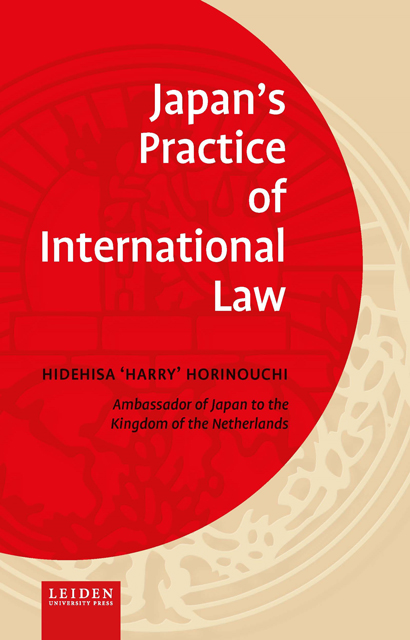Book contents
- Frontmatter
- Dedication
- Contents
- Foreword
- Chapter I Security and the Right of Self-Defense: 8 Hours on September 11
- Chapter II The End of the War: How World War II ended in Asia
- Chapter III The Remnants of War: Chemical Weapon: Poisonous Gas Accident in Qiqihar City, Heilongjiang Province
- Chapter IV Waters: Spy Vessel Incident in the Southwest Waters of Kyushu
- Chapter V Consular Affairs: Japan-China Consular Agreement:* Trajectory from the Shenyang Consulate-General Incident
- Chapter VI Human Rights of a Hijacker: CAAC Flight Hijacking Incident
- Epilogue
Chapter II - The End of the War: How World War II ended in Asia
Published online by Cambridge University Press: 12 January 2023
- Frontmatter
- Dedication
- Contents
- Foreword
- Chapter I Security and the Right of Self-Defense: 8 Hours on September 11
- Chapter II The End of the War: How World War II ended in Asia
- Chapter III The Remnants of War: Chemical Weapon: Poisonous Gas Accident in Qiqihar City, Heilongjiang Province
- Chapter IV Waters: Spy Vessel Incident in the Southwest Waters of Kyushu
- Chapter V Consular Affairs: Japan-China Consular Agreement:* Trajectory from the Shenyang Consulate-General Incident
- Chapter VI Human Rights of a Hijacker: CAAC Flight Hijacking Incident
- Epilogue
Summary
Introduction
Japan announced its acceptance of the Potsdam Declaration on August 15, 1945, and signed “Instrument of Surrender by Japan” on September 2 aboard the United States Navy battleship USS Missouri. This instrument formally proclaimed Japan’s unconditional surrender and cease of hostilities; however, it took another 6 years for Japan to achieve peace with the Allied Powers. The “Treaty of Peace with Japan” was signed on September 8, 1951 in San Francisco and came into force on April 28, 1952.
The San Francisco Peace Treaty not only set the peace and the territory, it also included provisions on security, political and economic clauses, and, more than anything, claims and property. Article 14(a)2(I) of the Treaty gave the right to Allied Powers subject to jurisdiction to seize, retain and liquidate or otherwise dispose of all property, rights and interests of Japan and Japanese nationals. Article 16 further stated, “As an expression of its desire to indemnify those members of the armed forces of the Allied Powers who suffered undue hardships while prisoners of war of Japan, Japan will transfer its assets and those of its nationals in countries which were neutral during the war… to the International Committee of the Red Cross…” On the other hand, the Treaty provided for the waiver of all claims of the Allied Powers and their nationals. Article 14(b) wrote, “Except as otherwise provided in the present Treaty, the Allied Powers waive all reparations claims of the Allied Powers, other claims of the Allied Powers and their nationals arising out of any actions taken by Japan and its nationals in the course of the prosecution of the war, and claims of the Allied Powers for direct military costs of occupation.”
However, from the late 1990s to the early 2000s, former US POWs and others filed a series of lawsuits in the United States against Japanese companies seeking monetary compensation for damages caused by Japanese acts during World War II. The reason for these series of litigations was a new California State Law. In July 1999, California enacted this new law, California Code, Code of Civil Procedure, Section 354.6.
- Type
- Chapter
- Information
- Japan’s Practice of International Law , pp. 29 - 40Publisher: Amsterdam University PressPrint publication year: 2022

